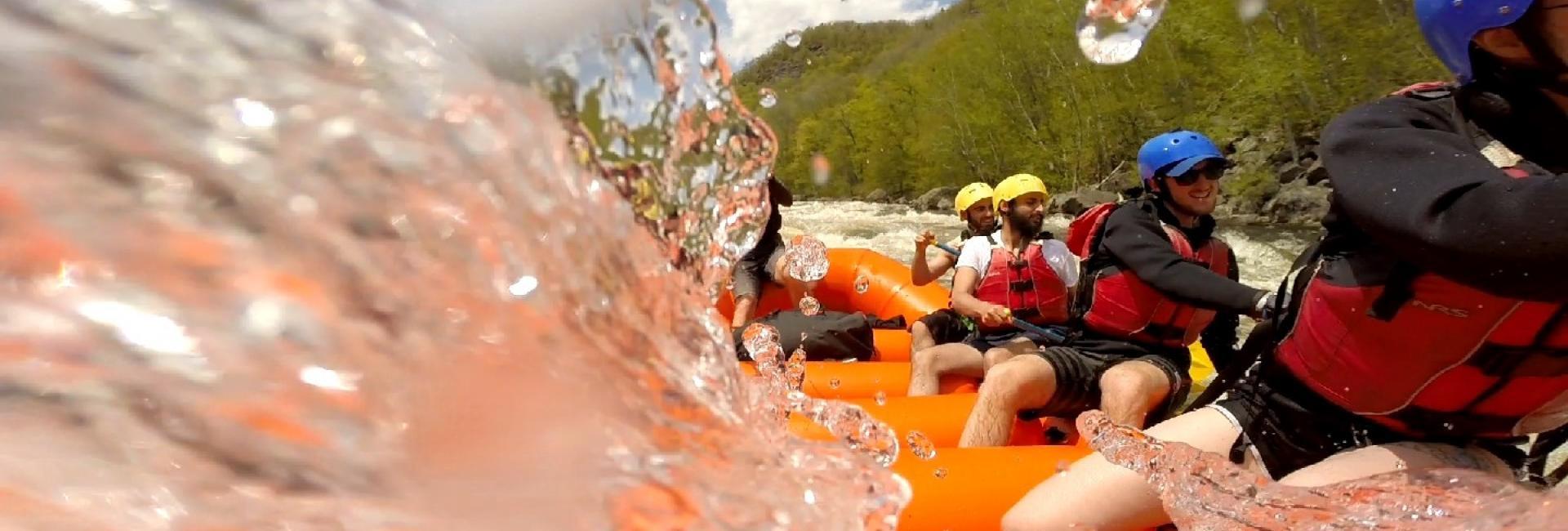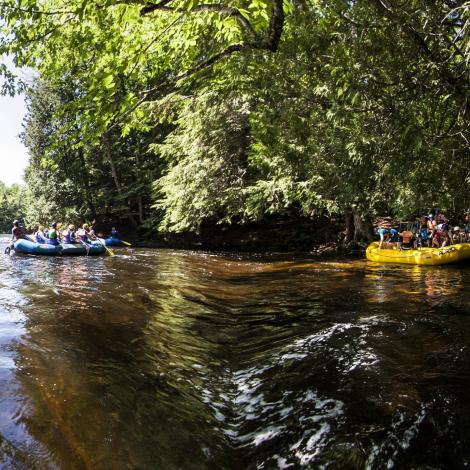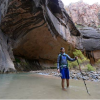ALL TOGETHER!
2 ON THE LEFT
BACKPADDLE RIGHT
GET DOWN!
Why are we yelling!?
If you’ve ever been whitewater rafting then you’ll recognize these commands. You particularly don’t want to hear the last one though. That’s because it means your raft is headed in a direction you don’t want it to be going… and you have a good chance of flipping. Luckily, the only time our crew heard “GET DOWN” was to make sure we were still paying attention. At least that’s what I’m assuming.
Whitewater rafting forces you to live in the moment, to become hyper-attuned to your surroundings, to how close you are to the edge of the raft, consciously aware of the unceasing pressure on your feet, which are jammed under the inflated cross sections of the raft. You feel your muscles flex and move, a vice grip hold on your paddle, and the clench of your core as you try to stay upright and in the raft.

As soon as you hear “ALL TOGETHER!” your stomach tightens, you lunge forward, driving your paddle into a white rapid, then ripping it back – all while trying to keep your balance.
Truth: whitewater rafting on the Hudson River, on top of being an awesome adventure, is an incredible workout.
This rafting trip was only the second time I’ve ever been. The first time, I didn’t have a guide in my boat, I was the “guide” steering the boat around rocks and giving commands to my crew. It was a bit terrifying, but that’s a whole other story. I was relieved to find out that we would have a guide in our boat this time not just because, you know, safety, but because they tell you what to do and how to stay cool under pressure.

Example, I figured most of the paddling would be done while trying to get to the next set of rapids, not during the rough rapids. Side note: in spring, the Hudson rages with Class IV and V rapids – which means it’s intense.
I thought that the water was moving faster during the rapid sections than the “flat” sections, thus, it would push us through quicker, and we could enjoy the rapids rather than paddling. Wrong. Most of the real paddling is done during the rapids. I learned you have to really paddle your way through rapids so you don’t get stuck in pockets or hydraulics, or you could flip. Glad to know I was doing it completely wrong my first time.
In the heart of the Adirondacks you’ve got some of the best whitewater in the Northeast, especially during the early spring. So much so that it’s not uncommon for people to drive 3.5 -4 hours from surrounding states just to tackle the rapids for a day. There are plenty of whitewater rafting guide services to pick from, but I’d highly recommend Adirondac Rafting Co. They make the entire experience so fun that the 17-mile trip (4.5 hours) flew by. Thanks T.J. for the paddling knowledge.

Starting on the Indian River in Indian Lake you eventually merge onto the Hudson River, yes yes I know what you’re thinking now, gross the Hudson River? Well everyone, take it from me (4 year NYCer), this section of the Hudson River is gorgeous and the water is pristine. I got a few mouthfuls of water while I was wooooooing and yeahhhing and I didn’t grow a third eye or anything. Utilizing one of the guided services also allows you to site-see more.
Take lunch, you paddle to the left side of the river, and dock. A few hundred feet into the woods is a gorgeous waterfall. The locals call it Virgin Falls, if you stand under it for 10 minutes, well, I’ll let them explain it to you actually. Wink. The whole setting though is like Rivendell. Maybe that’s because you are out in the Adirondack wilderness, five miles from any kind of road or town. The seclusion amplifies the experience.
The other highlight, outside of the rapids of course, is Elephant Rock. In one of the deeper and calmer sections of the river is a half dome shaped rock sticking out of the water. Your raft guide pulls up to it and holds the boat steady, while those who want to cliff jump, climb up the rock. It’s a small, maybe seven foot drop, but when you look over the edge, or face backwards like I did for a backflip, it feels much taller. You also have the pressure of knowing every other boat around is watching you. Our guide tried to get me to pull a gainer (running forward and then doing a backflip off) but I opted for a regular backflip because of the crowd down below.

My advice to you is, go experience the thrill of whitewater paddling in the Adirondacks, test your core, eat lunch by the waterfall, jump off Elephant Rock, and get ready to paddle your heart out with the biggest smile on your face. Grab your friends, your family, or both! After all, these experiences are even better when you experience them, ALL TOGETHER!



